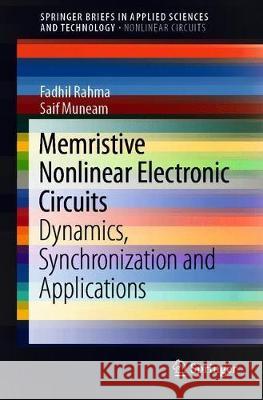Memristive Nonlinear Electronic Circuits: Dynamics, Synchronization and Applications » książka
topmenu
Memristive Nonlinear Electronic Circuits: Dynamics, Synchronization and Applications
ISBN-13: 9783030119201 / Angielski / Miękka / 2019 / 98 str.
Kategorie:
Kategorie BISAC:
Wydawca:
Springer
Seria wydawnicza:
Język:
Angielski
ISBN-13:
9783030119201
Rok wydania:
2019
Wydanie:
2019
Ilość stron:
98
Waga:
0.24 kg
Wymiary:
23.5 x 15.5
Oprawa:
Miękka
Wolumenów:
01











